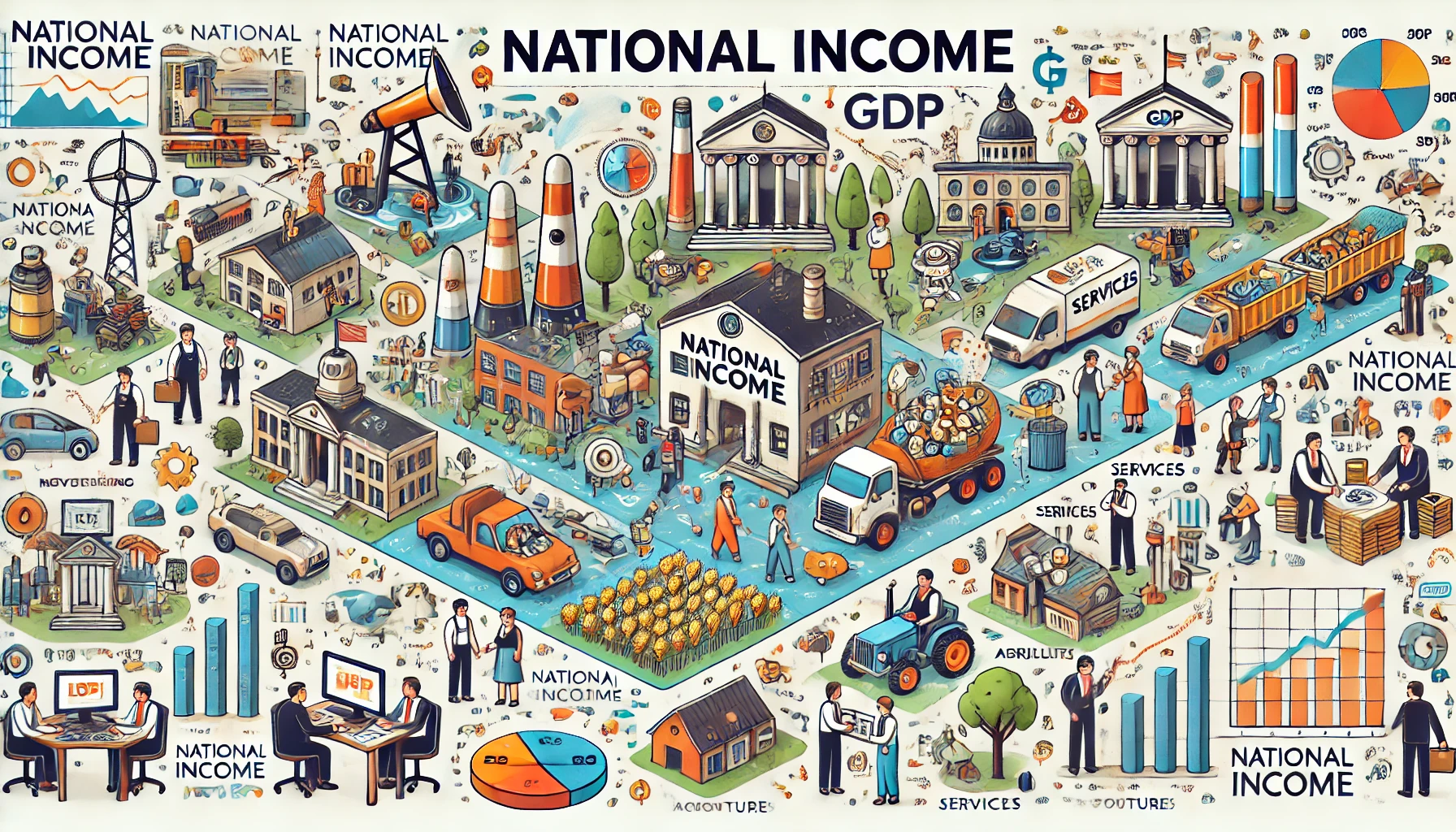Gross Domestic Product (GDP)
Definition: Gross Domestic Product (GDP) is the total monetary value of all goods and services produced within a country’s borders over a specific period, usually a year or a quarter. It includes all production by residents and foreign nationals within the country.
Components:
- Consumption (C): Total value of all goods and services consumed by households.
- Investment (I): Total spending on capital goods that will be used for future production.
- Government Spending (G): Total government expenditures on goods and services.
- Net Exports (NX): Exports minus imports.

Where,
C = Consumption
I = Investment
G = Government Spending
X = Exports
M = Imports
Gross National Product (GNP)
Gross National Product (GNP) is the total monetary value of all goods and services produced by the residents of a country, regardless of whether the production takes place within the country’s borders or abroad. It includes the income earned by nationals outside the country and excludes the income earned by foreigners within the country.

The Net income from abroad is calculated as under:

Net Domestic Product (NDP)
Net Domestic Product (NDP) is the total value of goods and services produced within a country (GDP) minus the depreciation on the country’s capital goods. Depreciation represents the wear and tear on the economy’s stock of equipment and structures.

Net National Product (NNP)
Net National Product (NNP) is the total value of goods and services produced by the residents of a country (GNP) minus depreciation. NNP accounts for the loss in value of capital goods and gives a clearer picture of the economy’s sustainable production.

Key Differences and Relationships:
- GDP vs. GNP:
- GDP measures the value of production within a country’s borders, regardless of who produces it.
- GNP measures the value of production by a country’s residents, regardless of where it takes place.
- GNP adjusts GDP by adding net income from abroad.
- NDP vs. GDP:
- NDP accounts for the depreciation of capital goods, whereas GDP does not.
- NDP provides a better measure of sustainable economic activity by considering the loss of value in capital goods.
- NNP vs. GNP:
- NNP adjusts GNP for depreciation, providing a clearer picture of the net production available for consumption or investment.
- NNP is often used to gauge the long-term productive capacity of an economy.
- NDP vs. NNP:
- Both account for depreciation, but NDP is based on GDP, and NNP is based on GNP.
- NDP is a measure within the country’s borders, while NNP includes net income from abroad.

GDP, GNP, NDP, and NNP are fundamental economic indicators that provide insights into a country’s economic performance and health. GDP and GNP measure the overall production, while NDP and NNP account for depreciation, offering a more refined view of an economy’s sustainable production capabilities. Understanding these concepts is crucial for economic analysis, policy-making, and comparing economic performance across countries.

